How to Grow Beets: From Tiny Seeds to Tasty Treats
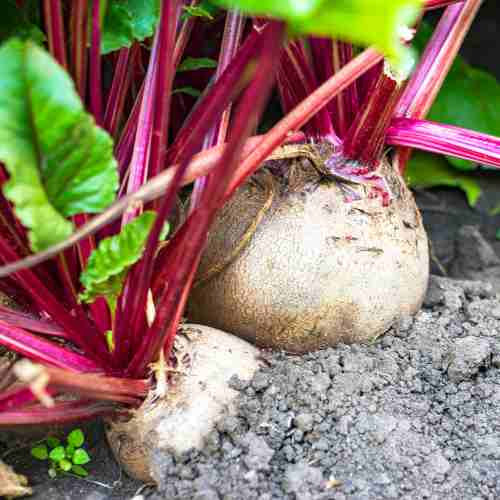
Growing beets is like hosting a garden party—you need the right setup, good vibes (sunlight), and a little patience to make sure your guests (the beets) thrive.
Whether you’re new to gardening or have a thumb so green it could photosynthesize, this guide will teach you how to grow beets that are delicious, nutritious, and Instagram-worthy.
Get our Gardening Buddy and find veggies that fit your conditions best.
You Can Grow It!
Why Grow Beets? (Or, Why Not?)
Let’s get one thing straight: beets are misunderstood. Sure, they have that “earthy” taste (read: dirt-like if you’re new to them), but give them a chance!
Roast them, pickle them, or toss them in a salad, and you’ll discover they’re versatile, vibrant, and ridiculously healthy. Plus, they’re basically the overachievers of the vegetable world—giving you edible roots and greens.
Still not sold? Imagine pulling up a beet the size of a baseball and feeling like a wizard. There’s your motivation.
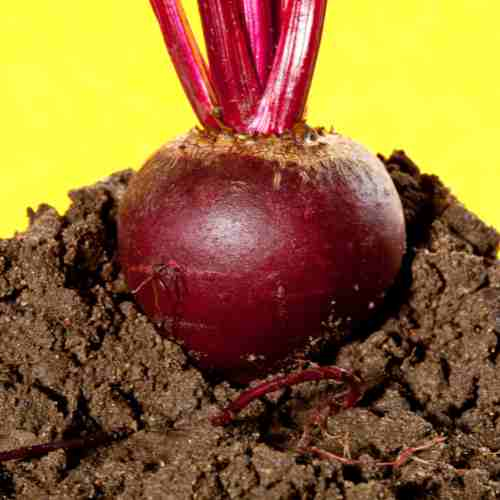
Step 1: Picking Your Beet Squad
Not all beets wear the same “red coat.” There’s a beet for every personality:
- Detroit Dark Red: The MVP. Reliable, classic, and great for beet newbies.
- Chioggia: The show-off with candy-striped rings. Perfect for impressing your dinner guests.
- Golden Beets: Milder and sweeter—like the golden retriever of the beet world.
Pro tip: Can’t decide? Mix and match for a colorful harvest that screams gourmet gardener.

Step 2: The Right Spot: A Beet’s Real Estate Needs
Beets are sun worshippers. They need at least 6 hours of sunlight a day to strut their stuff. That means no shady deals with trees or fences. If your garden is cramped, no worries—they’ll happily grow in a pot as long as it’s at least 8 inches deep.
Imagine your beets lounging under the sun, sipping on nutrients from the soil. It’s a root-vegetable vacation.
Step 3: Soil Prep: Give Your Beets the VIP Treatment
Beets are like toddlers—fussy about their surroundings but easy to please with a little effort. For a beet-friendly environment:
- Check the pH: Beets like their soil slightly acidic to neutral, between 6.0 and 7.5. Not a chemistry buff? Soil test kits are your friend.
- Add compost: Think of it as a beet buffet. Compost improves fertility and drainage while keeping those roots happy.
- De-clump: Rocks and clods are the enemy. Beets need smooth soil to grow into their round, robust selves.
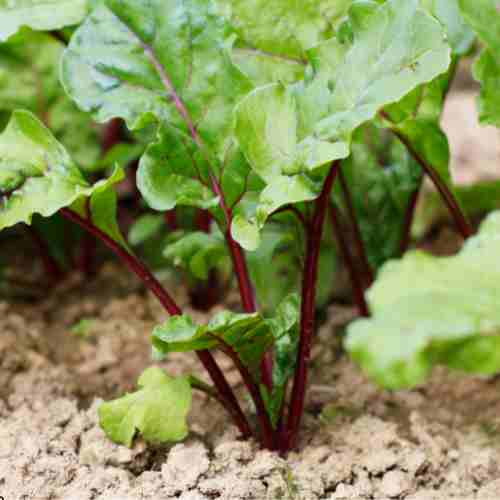
Step 4: Beets Planting: Time to Let the Magic Begin
Beets thrive in cooler weather, so aim for early spring or late summer. If you’re wondering how much time you have, remember this: plant them when you’re still debating whether to bring a jacket outside.
Beet Planting Tips:
- Soak the seeds: Beet seeds are overachievers—each one is actually a cluster of seeds. Soaking them in water for a few hours softens their “shell” and boosts germination.
- Spacing matters: No overcrowding here. Plant seeds 1 inch deep and 2–3 inches apart. Rows should be 12–18 inches apart to give them elbow room.
- Water like Goldilocks: Not too much, not too little—just enough to keep the soil moist but not swampy.
Step 5: Watering & Feeding: Keep the Beets Happy
Beets need consistent watering, but they don’t want to swim. Imagine them as guests at a fancy dinner party—they like their drinks topped off but don’t want soggy bread.
Fertilizer Tips:
- Use a balanced fertilizer, like a 10-10-10 mix, early on to give them a good start.
- Go easy on nitrogen. Too much will turn your beets into leafy divas with scrawny roots.
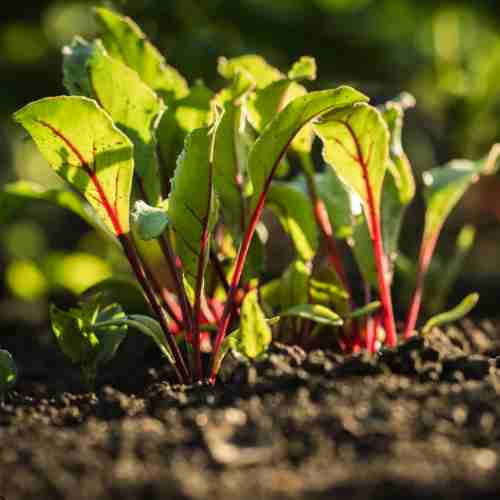
Step 6: Thinning Beet Seedlings: Less Is More
Beet seedlings can get a little clingy, growing too close for comfort. When they reach 2–3 inches tall, it’s time to thin them out. Snip or gently pull the extras, leaving 3–4 inches between plants.
Don’t waste those baby greens—they’re like a salad waiting to happen. Toss them with some olive oil and lemon juice, and voila, fancy!
Step 7: Pests & Problems: Beets’ Arch-Nemeses
Beets are generally tough, but even superheroes have villains. Here’s how to keep your crop out of trouble:
- Leaf miners: These pests leave little trails on beet leaves like they’re playing connect-the-dots. Solution? Trim off the affected leaves and compost them far away.
- Funky spots (Cercospora leaf spot): This fungal drama causes dark spots. Avoid overhead watering and keep your garden tidy to nip it in the bud.
- Forked roots: These weirdly shaped roots happen when the soil has rocks or too much fresh manure. Think of it as a lesson in humility.
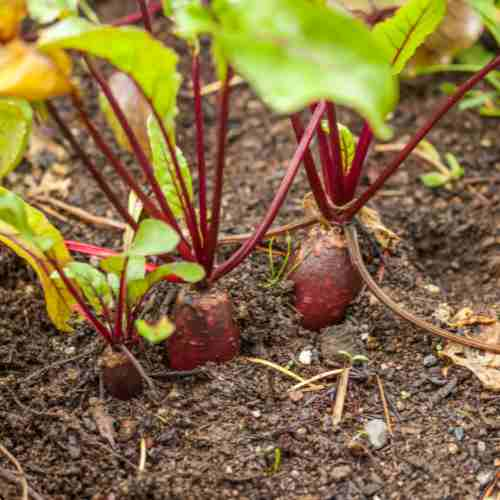
Step 8: Beet Harvest Time: The Grand Finale
Beets are ready to party about 50–70 days after planting. But how do you know when it’s showtime?
- Roots should be the size of a golf ball to a tennis ball. Bigger isn’t always better—oversized beets can taste woody.
- Loosen the soil around the beet with a garden fork, then gently pull them up. No tug-of-war required.
Don’t Forget the Greens!
The greens are edible and packed with nutrients. Use them in salads, sauté them, or throw them in a smoothie for a healthy boost.
Step 9: Storing & Eating Beets: From Garden to Table
Fresh beets can hang out in your fridge for a few weeks or chill in a root cellar for months. To store them:
- Trim the greens to about 1 inch above the root.
- Keep them in a breathable bag (no suffocating plastic, please).
How to Eat Your Beets:
- Roast them with olive oil, salt, and pepper. Simple yet divine.
- Slice them thin and pickle them for tangy snacks.
- Puree them into soups or dips for a pop of color.
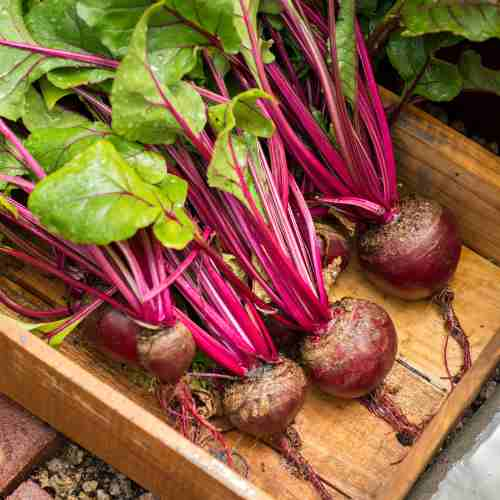
Final Thoughts: Beets, Your New Best Friend
Growing beets is an adventure full of small victories—like watching the first seedlings pop up or pulling up a perfectly round beetroot. They’re low-maintenance, versatile, and bring a splash of color to your garden and plate.
So, go ahead. Plant those seeds, water with care, and get ready to harvest your very own beet bounty. Trust me, your garden (and your taste buds) will thank you.
Get our Gardening Buddy and find veggies that fit your conditions best.
You Can Grow It!
Partners and Sponsors
We are forever grateful to our partners and sponsors. Send an email to team @ strongecho.com and let’s see how we can grow each other’s impact!





